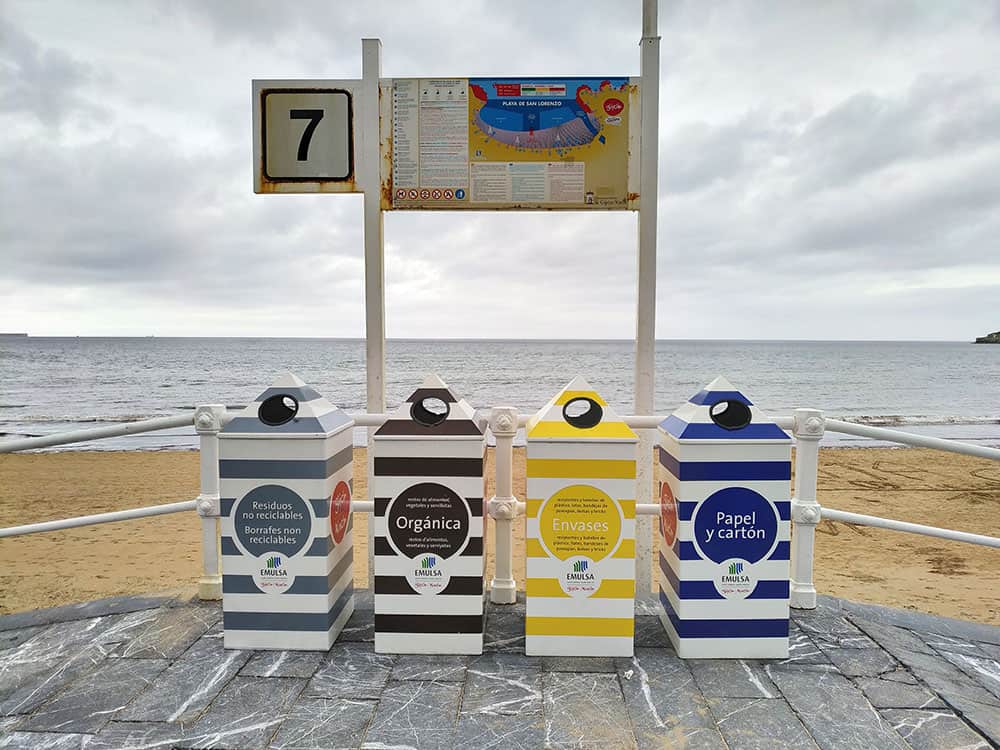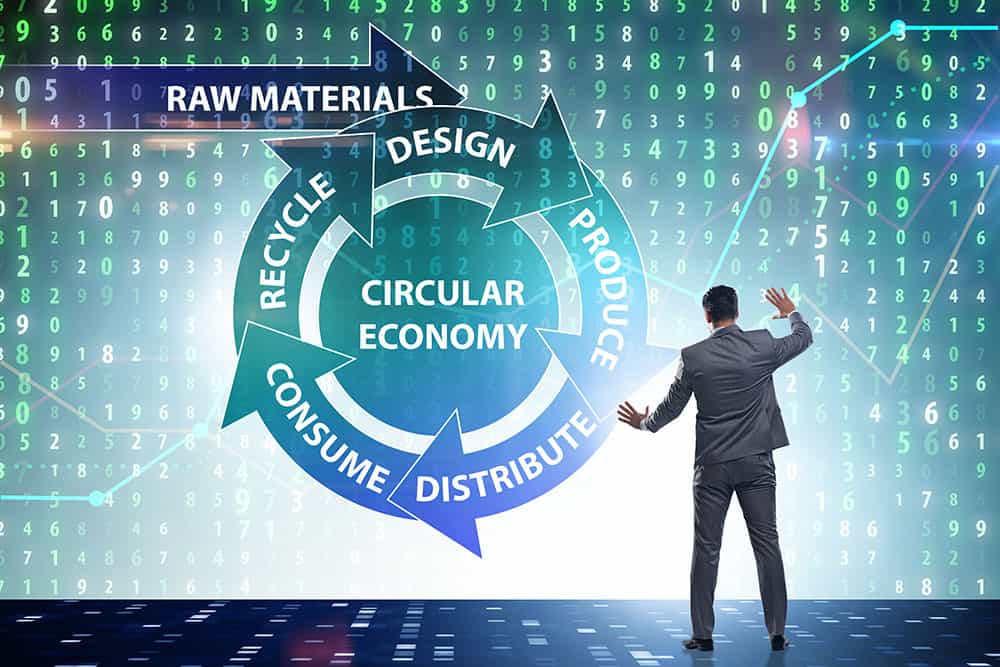Compostable packaging is popularly seen as an answer to plastic pollution, but while it has a role to play in a circular economy, it is not a silver bullet. Any time a piece of packaging is used once – no matter how it is disposed of – it is single-use. Preventing waste in the first place should be top priority.
By Laura Collacott, Freelance Editor, Ellen MacArthur Foundation on May 26, 2022
In 2018, Collins Dictionary named ‘single-use’ as its word of the year as the world woke up to the plastic pollution crisis. Single-use plastics have come to epitomise our take-make-waste linear economy, and as global awareness has grown, ‘no excuse for single-use’ has become a common refrain. From straws and plastic bags to disposable coffee cups and takeaway cartons, retailers and their customers have been looking for ways to reduce consumption of disposable plastics.
A shift to compostable packaging – products made from biodegradable materials that can, if handled properly, be returned to the earth after use – appears to be an intuitive solution, particularly for the food industry. And a popular one. Vegware, a UK-based supplier of plant-based, compostable packaging, saw its sales increase by 53% in 2019 and a further 43% in 2020. In Canada, fast food chain KFC has committed to make all its consumer-facing packaging home compostable by 2025.
These trends are echoed in Europe, North America, and Asia and look set to continue. Research by Future Market Insights suggests that global sales of compostable foodservice packaging will reach USD 19.9 billion in 2022 and USD 28.8 billion by 2029, with the Asia-Pacific region the fastest growth area thanks to government policies to stem the tide of plastic pollution.
However, compostable packaging is not a cure-all.
Biodegradable, compostable and bio-based plastics – what’s the difference?
Compostable packaging: a good idea in principle
First and foremost, single-use products, regardless of the material used, tend to consume more energy and produce more emissions than recycled or reused alternatives. Once used, most compostable packaging can only currently be broken down effectively in industrial composting facilities, ideally in-vessel composting, an energy intensive process that requires heat and oxygen inputs over several weeks. Although data is patchy, some life cycle assessments (LCAs) found compostable materials can have higher environmental impacts than non-compostable alternatives. While LCAs don’t take into account the long-term impacts of a system that only uses non-compostable packaging nor the potential for more efficient energy use as compostables reach scale, they do highlight the challenges in simply swapping conventional packaging for compostable alternatives.
Then there are the problems of collection, sorting, and processing.
Specialist industrial composting facilities are not currently widespread. For example, although the UK has invested heavily in anaerobic digestion facilities to process food waste, industrial composting infrastructure is not yet sufficient to process compostable packaging at scale. In the US, there are fewer than 100 plants capable of processing certified packaging. Transporting materials to the right plant increases their carbon footprint.
Poor waste sorting systems mean that compostables often well-meaningly find their way into the wrong streams, contaminating full batches of recycling and condemning them to landfill. That’s if products are effectively collected and sorted in the first place. The vast majority are not. In the UK, only 1 in 400 takeaway coffee cups, compostable or otherwise, currently make it an appropriate processing facility. The rest are binned or leaked into the environment. Once in landfill, compostable packaging can take years to biodegrade, and can release the same harmful methane emissions as food waste in the process, while products that end up in the natural environment may not biodegrade at all.

Prevention is better than cure
In a circular economy, the more intact a material can stay while being circulated the better, as it preserves not only the material, but also the embedded labour and energy. As a rule of thumb, retaining the shape of the packaging (e.g. through reuse) is more desirable than grinding up the packaging (e.g. through mechanical recycling) which, in turn, is more desirable than breaking the packaging down into basic chemical components.
Composting is the biological equivalent of recycling. In the face of our current environmental challenges, recycling won’t be enough to overcome the sheer amount of waste we produce. “In a properly built circular economy, one should rather focus on avoiding the recycling stage at all costs,” states the World Economic Forum. “It may sound straightforward, but preventing waste from being created in the first place is the only realistic strategy.”
Greenpeace USA cautioned against solutions which simply substitute single-use items for other disposables in a report published in 2019: “There is no way the planet can sustain additional demand from companies attempting to substitute their single-use plastic packaging; companies must commit to overall reduction of packaging and shift to alternative delivery systems like reuse and refill.”
A circular economy instead prioritises upstream solutions that address problems right at the source by eliminating unnecessary packaging and circulating the packaging that is needed. For example deposit-return systems for reusable coffee cups eliminate the need for disposables altogether, and laser-marking the skin of some fruit and vegetables removes the need for plastic wraps and stickers. Reuse is another upstream solution. Jute bags, for example, can be reused a number of times and are ultimately compostable at the end of their useful lives.
When composting is an effective solution
Exceptions, however, prove the rule. There are instances where well thought through, compostable solutions are the best fit for a circular economy – particularly where they return nutrients to the soil and contribute to regenerating soils and building a healthy food system. Switching to compostable fruit stickers or using seaweed sachets for sauce servings, for example, can prevent contamination of organic materials and ensure more of them can be safely returned to the soil.
Closed loop systems are ideal applications. Take a festival or sports event: using compostable packaging means uneaten food and scraps can be thrown in a single bin for processing, preserving food nutrients without contaminating the waste stream. Similarly, collection services where companies both supply and collect compostable packaging reduces contamination and leakage, and ensures that materials are circulated at their highest value.
For example, Biopak’s Compost Club supplies and later collects used packaging from businesses for its own compost service, and has diverted more than 1,500 tonnes of compostable packaging and food scraps from landfill in Australia and New Zealand since launching in 2017. In Milan, municipal authorities have tripled the collection of separated food waste by providing vented bins and compostable bags to residents, enabling the production of good quality compost for farmers.
Overall, compostables could be an appropriate substitute for up to 20% of plastic flexibles – the fastest growing plastic-packaging category – while the Bio-Based and Biodegradable Industries Association (BBIA) estimates that compostable materials could substitute around 5-8% of current plastic packaging”.

Building compostable packaging into the circular economy
Compostable packaging is one of multiple solutions needed to prevent waste, circulate materials, and regenerate nature. It is best suited to certain scenarios, notably food and drink applications where it can help increase the proportion of organic waste collected, treated and recycled, which at the moment stands at only 13%. To increase this rate, industrial facilities need to be scaled globally over the coming years to capture and circulate organic materials, some of which will be collected alongside compostable food packaging.
For this to be effective, we need global investment in collection and processing infrastructure to ensure both the logistics and economics work. Italy’s compostable packaging EPR scheme is an example of a mechanism for raising funds.
Concurrently, businesses and policymakers need to develop and roll out labelling systems and collection streams that effectively separate and sort compostable materials. Technological advances such as digital watermarks are making this increasingly feasible and affordable.
But before turning to compostable solutions, even if the right treatment facilities are available, businesses should ask themselves first and foremost if elimination or reuse would be better solutions. After all, what we really need to tackle is our throw-away economy.
Read more: Substitution to compostable flexibles
The Ellen MacArthur Foundation works in Education & Training, Business & Government, Insight & Analysis, Systemic Initiatives and Communications to accelerate the transition to a circular economy.






